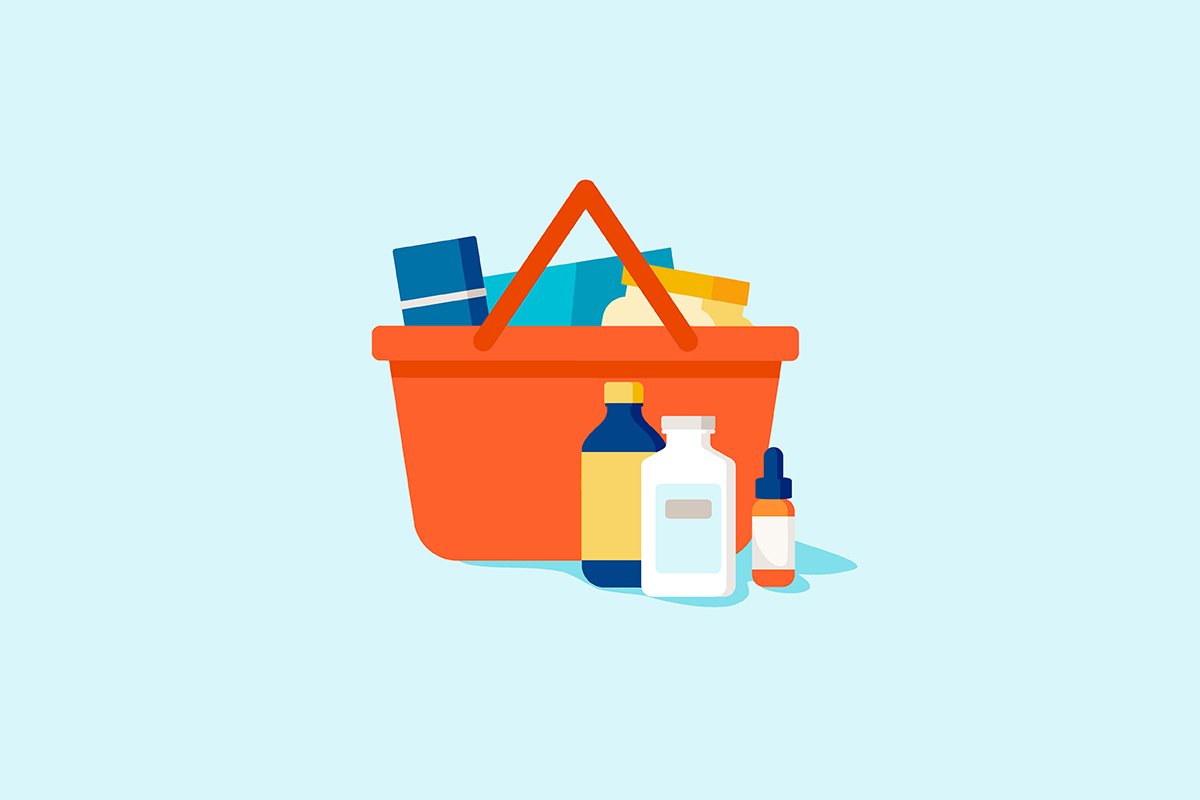
Stock up on your health care essentials at Optum Store. Use your HSA/FSA dollars to save even more.

Medical tests for heart disease, cancer and other health problems are important. They can even save your life. But not everyone gets them. Learn what you need to get the care you deserve.
If you can’t remember the last time you got a health screening, you’re in good company. Only 8% of Americans 35 and older get all their recommended screenings.1 That’s not great news. Some of these tests could save your life.
Serious health conditions such as heart disease and cancer take the lives of more than a million people each year. And there are tests that find the first signs of a problem. But if you don’t get these screenings, you may be less likely to catch symptoms at their earliest stages.
People put off or don’t get lifesaving tests for many reasons. Part of the problem is that many people don’t have a primary care provider (PCP). That’s a doctor, nurse practitioner or physician assistant who provides most of your care. Or if they do have a PCP, they don’t see them regularly.
One of the important services your PCP provides is telling you when you should start getting health screenings. When necessary, a PCP refers you to a specialist to perform those tests.
But even if they have a provider, fear can get in the way of getting needed tests. “Some people don’t want to know they’re sick. Avoiding screenings is a way to keep health problems ‘out of sight, out of mind,’” says Walter Beaver, MD. He’s a family medicine doctor at American Health Network, part of Optum, in Noblesville, Indiana. Our over-scheduled lives don’t help either, he adds. When you’re always busy, it’s easy to put off exams.
But sometimes the reasons are more troubling. Case in point: Race can play a role in who gets their health screenings. People of color have a harder time getting health care.2 And cancer screening is lower among people of color than it is in white people.3
Lack of insurance or childcare can make it hard to get to the doctor. And if you can’t get time off work, you won’t get there either. Poverty in general is a major barrier, Dr. Beaver says. Quality health care is often harder to find in low-income areas, he adds. People may even have trouble getting a ride to a doctor’s office. (Learn more about all the factors that affect your health.)
The good news is that changes are underway that will help more people get the health care and screenings they need. Virtual visits are helping doctors reach more patients. Seeing a doctor through a device is convenient for everyone. That includes those in low-income areas.
Technology will also play a vital role as gadgets such as health trackers and smart watches get more advanced. These devices can track important aspects of your health, such as blood pressure and heart rate.
But in the meantime, those screening tests still matter — a lot. Here's what you need and when.
Here are the key screening tests people need throughout adulthood. Talk to your doctor about the right schedule for you.
Blood tests can check for elevated levels of cholesterol and blood sugar. High cholesterol, a type of blood fat, raises your risk of heart disease.4 And high blood sugar is linked to prediabetes or type 2 diabetes.
Your provider will order blood tests during a routine physical exam. They will also perform other important tests such as taking your blood pressure and pulse (heart rate). High blood pressure or an uneven heart rate can also be signs of heart disease.
During your checkup, your PCP will also listen to your heart and lungs. They’ll also check your ears and mouth. How often you need to get a physical depends on your age.
When you need them: Healthy adults generally need cholesterol tests every four to six years, says the Centers for Disease Control and Prevention.5 Blood sugar tests are recommended starting at age 35 for people who are overweight and at age 45 for all.6
Yearly checkups are usually recommended after age 35, Dr. Beaver says. That’s because your risk of certain health problems rises with age. “For people under 35 who are feeling well, you may only need to see your doctor every few years,” he adds.
This test screens for cancers that form in the last part of your intestine (colon and rectum). There are two types of tests. Stool tests check for blood or material that could be a sign of cancer. You can do the test at home. Visual tests, called colonoscopies, must be done by a doctor. Ask your doctor which test is best for you.
Here’s what to expect during a colonoscopy. The night before, you will drink a formula to clean out your bowels. The next day at the doctor’s office, you’ll get a sedative to help you relax and feel sleepy. The doctor then inserts a flexible lighted tube (called a fiber optic scope) into the rectum. They use the scope to check your large intestine (colon). If a polyp or growth is found, your doctor will remove it right then.
When you need it: All men and women should start getting screened at age 45.7 But if you have a family history of colorectal cancer, you may start at age 40. You should do a stool test every year. Or you can get a colonoscopy every 10 years. You will need more frequent screenings if you’re at a higher risk of colon cancer.

Stock up on your health care essentials at Optum Store. Use your HSA/FSA dollars to save even more.
If you’re sexually active, be sure to talk to your doctor about screening for sexually transmitted infections, including chlamydia, gonorrhea and HIV. The recommendations vary based on age, sexual history and more.8 Your doctor can help you determine which ones are right for you.
Along with the tests above, women should also have regular breast and cervical cancer screening depending on their age. Here are the details:
This X-ray test looks for possible signs of breast cancer in women. You can get a mammogram at a hospital, clinic or even a mobile clinic.
When you need it: Knowing when to get a mammogram can be confusing. Talk to your doctor about what age is best for you. “I start the discussion about mammograms with my patients at age 40,” Dr. Beaver says.
The American Cancer Society states that women between 40 and 44 should have the choice to start yearly mammograms. And those ages 45 to 54 should get mammograms every year. Women 55 and older can switch to having a mammogram every other year.9 If you have a family history of breast cancer, your provider might recommend that you start getting mammograms sooner, according to the CDC.10
You deserve a doctor who gets you. Find Optum providers near you now.
Cervical cancer screening in women looks for early signs of cancer in the cervix (the opening of your uterus). Screenings include the human papillomavirus (HPV) test, the Pap test or both.
Your doctor will insert a tool called a speculum into your vagina. It helps them see your cervix and vagina more easily. Then they will take a sample of cervical cells. A lab will check for abnormal cells (Pap test) and/or HPV. HPV is a sexually transmitted infection that can increase the risk of cervical cancer.
When you need it: The American College of Obstetricians and Gynecologists recommends that women 21-29 should have a Pap test every three years. Women 30-65 have a few options. Depending on your age and family history, your doctor might recommend:
These exams look for early stages of prostate cancer in men. One is called a rectal exam. This allows your doctor to check your prostate gland for anything abnormal.
Your doctor will also talk to you about ordering a blood test that checks the health of your prostate. It’s called a prostate-specific antigen (PSA) test. High PSA levels can be a sign of prostate cancer. But they can also be high if you have an infection. If your PSA test is abnormal, your doctor will talk to you about next steps. They may give you with an antibiotic and repeat the prostate test after a few weeks. If it remains elevated, they may choose to continue to follow it. Or your doctor may refer you to a specialist for their opinion.
When you need it: Have a discussion with your doctor to decide how and when you need to be screened. For men at average risk of prostate cancer, your doctor may suggest starting screenings at age 50. But if you’re at high risk, you should talk to your doctor about getting an exam earlier. Black men and those who have a family history of prostate cancer should start the discussion at 40 to 45.
How often you should get a prostate exam depends on the results of your PSA test. If your PSA level is high, have the test yearly. You may be tested every other year if your PSA is within normal levels.12

Having good health insurance makes it more affordable to get screenings and other health care you need. If you have health insurance through your employer, for example, annual screenings may be covered at no cost to you. If you don’t have health insurance, here are three ways to find a good plan.
Work with a broker. Health insurance brokers help you sign up for a health plan based on your needs and budget. You may be eligible for a tax credit and other savings if you work with one of them. Health insurance brokers may work for one insurance company or several.
Sign up for a plan using the Affordable Care Act (ACA) exchanges. When you choose an ACA-compliant plan, you may qualify for financial help. This can help cover the cost of your health insurance. Compare plans at healthcare.gov or your state exchange website.
Consider Medicare. This is a federal health insurance program for people 65 and older. Some younger people with disabilities are eligible, too. Visit medicare.gov to learn more about plans. If you’re not sure what to choose, you can get one-on-one help from your State Health Insurance Assistance Program.
Did you know that you can help pay for screening and diagnostic tests with funds from your medical expense accounts? Learn more about how they work and check eligible services here.
Sources
© 2024 Optum, Inc. All rights reserved. Do not reproduce, transmit or change any information or content on this website in any form or by any means without the express written permission of Optum
The information featured in this site is general in nature. The site provides health information designed to complement your personal health management. It does not provide medical advice or health services and is not meant to replace professional advice or imply coverage of specific clinical services or products. The inclusion of links to other websites does not imply any endorsement of the material on such websites.
Stock photo. Posed by model.